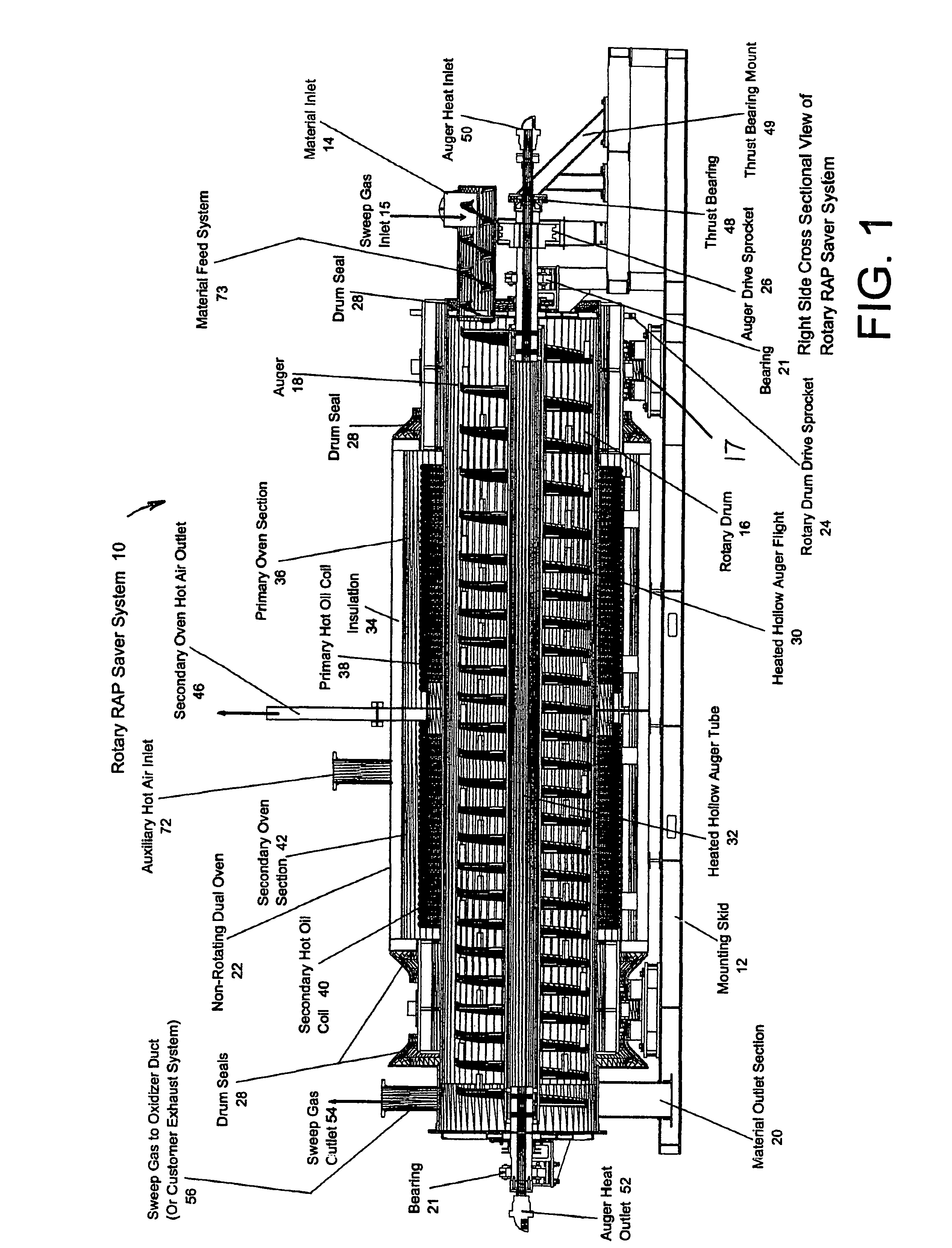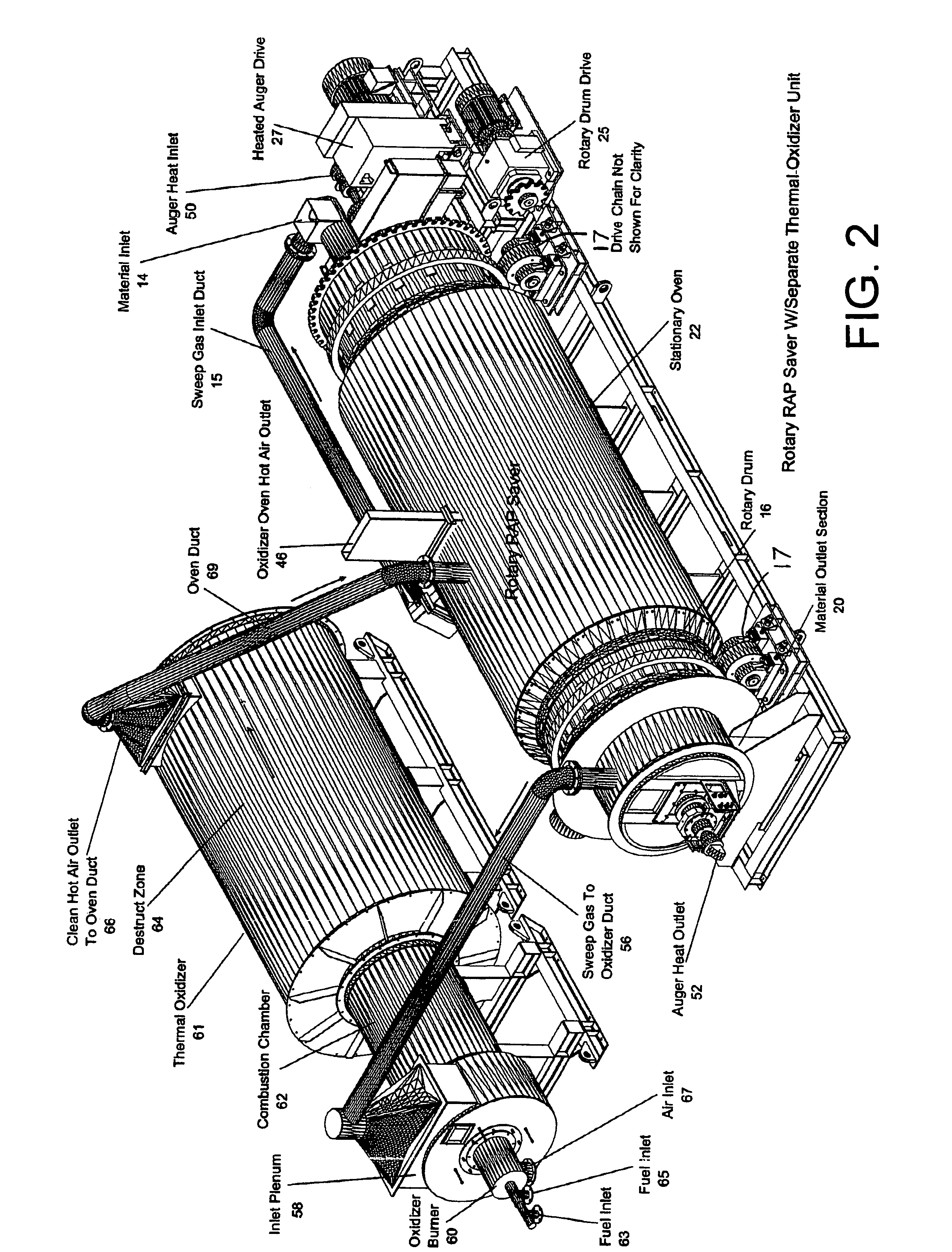Rotary thermal recycling system
a technology of thermal recycling and rotary shaft, which is applied in the direction of furnaces, charging, and ways, can solve the problems of aggravating wear on the surface of augers, affecting the efficiency of thermal processing, and affecting the efficiency of thermal processing, and achieves the effect of slow gradual elevation of product temperatur
- Summary
- Abstract
- Description
- Claims
- Application Information
AI Technical Summary
Benefits of technology
Problems solved by technology
Method used
Image
Examples
Embodiment Construction
[0037]Referring to FIGS. 1-6, the new Rotary RAP Saver System 10 is skid mounted 12 for ease of installation and is fully operational while mounted on the skid structure 12. The skid arrangement also lends itself to mobilization. The unit modules can be simply mounted on flat bed trailers to travel to new locations. Various different types of feeder systems are available for charging the material into the unit, such as conveyors, drag slats, bucket elevators, vibratory feeders, elevated silos, etc. The raw material is fed into the rotary drum inlet 14 at a pre-qualified and controlled amount or tonnage rate. Different feed mechanisms may be used, such as an inclined chute, breeching with rotating inlet collar, slinger conveyor, screw auger conveyor, among others, whichever is most convenient for the particular type of material. The rotary drum 16 and auger 18 rotate in the same direction. The material inlet 14, material outlet 20, and oven 22 are stationary. The rotary drum 16 is su...
PUM
| Property | Measurement | Unit |
|---|---|---|
| temperature | aaaaa | aaaaa |
| temperature | aaaaa | aaaaa |
| temperatures | aaaaa | aaaaa |
Abstract
Description
Claims
Application Information
 Login to View More
Login to View More - R&D
- Intellectual Property
- Life Sciences
- Materials
- Tech Scout
- Unparalleled Data Quality
- Higher Quality Content
- 60% Fewer Hallucinations
Browse by: Latest US Patents, China's latest patents, Technical Efficacy Thesaurus, Application Domain, Technology Topic, Popular Technical Reports.
© 2025 PatSnap. All rights reserved.Legal|Privacy policy|Modern Slavery Act Transparency Statement|Sitemap|About US| Contact US: help@patsnap.com



